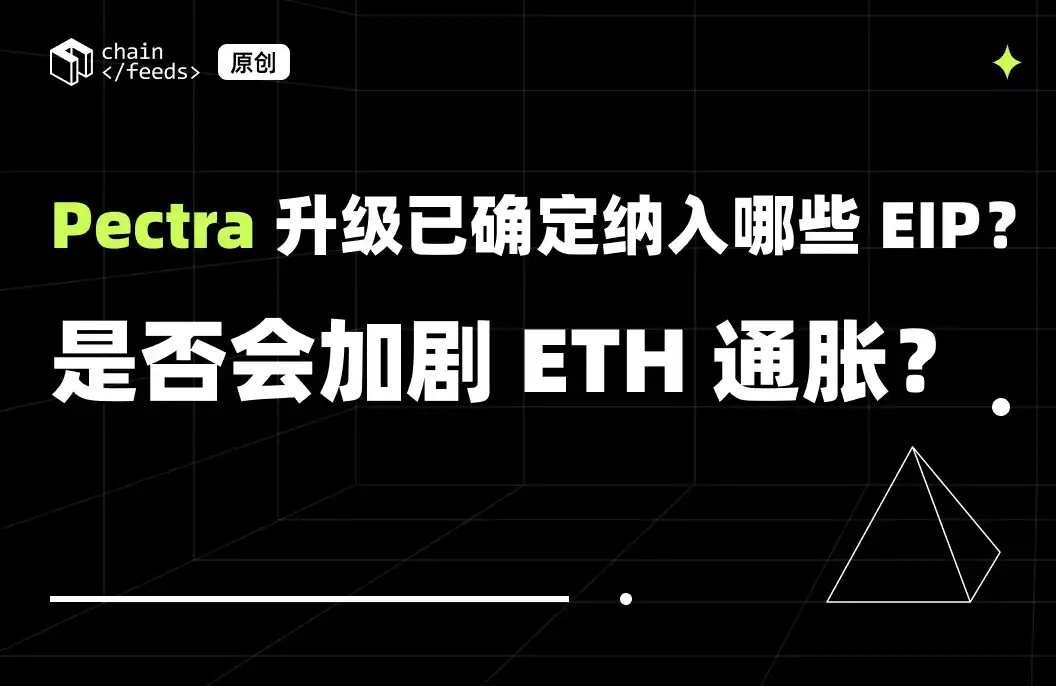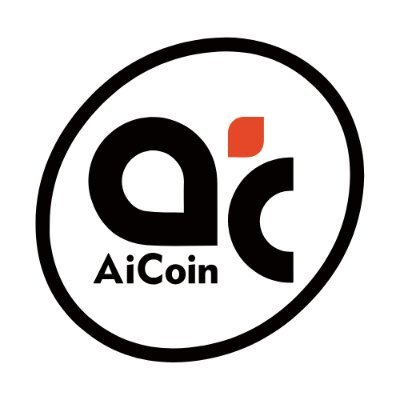Bitget:全球日交易量排名前 4!
BTC 市占率59.88%
Bitget 新幣上架:Pi Network
山寨季指數:0(比特幣季)
BTC/USDT$95755.95 (-0.80%)恐懼與貪婪指數50(中性)
比特幣現貨 ETF 總淨流量:-$50.4M(1 天);-$626.2M(7 天)。Bitget 新用戶立享 6,200 USDT 歡迎禮包!立即領取
到 Bitget App 隨時隨地輕鬆交易!立即下載
Bitget:全球日交易量排名前 4!
BTC 市占率59.88%
Bitget 新幣上架:Pi Network
山寨季指數:0(比特幣季)
BTC/USDT$95755.95 (-0.80%)恐懼與貪婪指數50(中性)
比特幣現貨 ETF 總淨流量:-$50.4M(1 天);-$626.2M(7 天)。Bitget 新用戶立享 6,200 USDT 歡迎禮包!立即領取
到 Bitget App 隨時隨地輕鬆交易!立即下載
Bitget:全球日交易量排名前 4!
BTC 市占率59.88%
Bitget 新幣上架:Pi Network
山寨季指數:0(比特幣季)
BTC/USDT$95755.95 (-0.80%)恐懼與貪婪指數50(中性)
比特幣現貨 ETF 總淨流量:-$50.4M(1 天);-$626.2M(7 天)。Bitget 新用戶立享 6,200 USDT 歡迎禮包!立即領取
到 Bitget App 隨時隨地輕鬆交易!立即下載


Gas DAO 價格GAS
報價幣種:
USD
$0.{6}4175-0.02%1D
價格走勢圖
最近更新時間 2025-02-23 20:55:34(UTC+0)
市值:--
完全稀釋市值:--
24 小時交易額:$54,144.8
24 小時交易額/市值:0.00%
24 小時最高價:$0.{6}4217
24 小時最低價:$0.{6}4141
歷史最高價:$0.0004196
歷史最低價:$0.{6}3672
流通量:-- GAS
總發行量:
1,000,000,000,000GAS
流通率:0.00%
最大發行量:
--GAS
以 BTC 計價:0.{11}4360 BTC
以 ETH 計價:0.{9}1492 ETH
以 BTC 市值計價:
--
以 ETH 市值計價:
--
合約:
0x6bba...2958469(Ethereum)
您今天對 Gas DAO 感覺如何?
注意:此資訊僅供參考。
Gas DAO 今日價格
Gas DAO 的即時價格是今天每 (GAS / USD) $0.{6}4175,目前市值為 $0.00 USD。24 小時交易量為 $54,144.8 USD。GAS 至 USD 的價格為即時更新。Gas DAO 在過去 24 小時內的變化為 -0.02%。其流通供應量為 0 。
GAS 的最高價格是多少?
GAS 的歷史最高價(ATH)為 $0.0004196,於 2021-12-29 錄得。
GAS 的最低價格是多少?
GAS 的歷史最低價(ATL)為 $0.{6}3672,於 2025-01-31 錄得。
Gas DAO 價格預測
GAS 在 2026 的價格是多少?
根據 GAS 的歷史價格表現預測模型,預計 GAS 的價格將在 2026 達到 $0.{6}4904。
GAS 在 2031 的價格是多少?
2031,GAS 的價格預計將上漲 +4.00%。 到 2031 底,預計 GAS 的價格將達到 $0.{5}1043,累計投資報酬率為 +148.66%。
Gas DAO 價格歷史(USD)
過去一年,Gas DAO 價格上漲了 -34.47%。在此期間, 兌 USD 的最高價格為 $0.{5}2450, 兌 USD 的最低價格為 $0.{6}3672。
時間漲跌幅(%) 最低價
最低價 最高價
最高價 
 最低價
最低價 最高價
最高價 
24h-0.02%$0.{6}4141$0.{6}4217
7d-12.09%$0.{6}4141$0.{6}4762
30d-11.19%$0.{6}3672$0.{6}7331
90d-27.50%$0.{6}3672$0.{6}8112
1y-34.47%$0.{6}3672$0.{5}2450
全部時間-99.90%$0.{6}3672(2025-01-31, 24 天前 )$0.0004196(2021-12-29, 3 年前 )
Gas DAO 市場資訊
Gas DAO 持幣分布集中度
巨鯨
投資者
散戶
Gas DAO 地址持有時長分布
長期持幣者
游資
交易者
coinInfo.name(12)即時價格表

Gas DAO 評級
社群的平均評分
4.4
此內容僅供參考。
Gas DAO (GAS) 簡介
Gas DAO 代幣的深入解讀
Gas DAO 是一個去中心化自治組織(DAO),旨在為其社區成員提供直接的治理和利益。此任務通過其原生加密貨幣,Gas DAO Token(GAS),實現。本文將介紹 Gas DAO Token 的基本資訊、功能,以及它如何影響加密貨幣世界。
Gas DAO 代幣的基本資訊
Gas DAO Token(GAS)是 Gas DAO 平台的原生代幣,它的主要功能是提供賦予用戶對平台治理的權利。擁有 GAS 的用戶可以對平台的發展方向、改進提案以及新功能的實施進行投票。通過這種方式,Gas DAO 可以確保其決策過程完全反映社區成員的意願和利益。
Gas DAO 代幣的功能
除了提供治理權利外,GAS 還在平台內具有其他功能。首先,它可以作為交易媒介,在 Gas DAO 的去中心化市場中充當貨幣。此外,GAS 還可以用於參與平台的各種貨幣池,通過提供流動性來獲得獎勵。
最後,GAS 被用於獎勵那些對 Gas DAO 社區做出貢獻的人。平台有一個特殊的機制,被稱為 "燒毀 "機制。每當 GAS 被用於治理或對社區做出貢獻時,一定比例的 GAS 會被永久 "燒毀",以減少其總供應量。這促使了 GAS 的價值的增加,並激勵了更多的用戶參與社區活動。
Gas DAO 代幣及其對加密貨幣世界的影響
整體而言,Gas DAO 代幣反映了去中心化自治組織 (DAO) 的一種趨勢,即為社區成員提供更多的權力和影響力。通過GAS,用戶不僅能夠參與決策過程,還能通過提供價值和投資時間來增加其權益。這種模式將在未來的區塊鏈和加密貨幣項目中發揮越來越重要的作用,因為它有助於增強網絡的效率和公正性,並創造出真正屬於用戶的去中心化網絡。
GAS 兌換當地法幣匯率表
1 GAS 兌換 MXN$01 GAS 兌換 GTQQ01 GAS 兌換 CLP$01 GAS 兌換 HNLL01 GAS 兌換 UGXSh01 GAS 兌換 ZARR01 GAS 兌換 TNDد.ت01 GAS 兌換 IQDع.د01 GAS 兌換 TWDNT$01 GAS 兌換 RSDдин.01 GAS 兌換 DOP$01 GAS 兌換 MYRRM01 GAS 兌換 GEL₾01 GAS 兌換 UYU$01 GAS 兌換 MADد.م.01 GAS 兌換 OMRر.ع.01 GAS 兌換 AZN₼01 GAS 兌換 SEKkr01 GAS 兌換 KESSh01 GAS 兌換 UAH₴0
- 1
- 2
- 3
- 4
- 5
最近更新時間 2025-02-23 20:55:34(UTC+0)
如何購買 Gas DAO(GAS)

建立您的免費 Bitget 帳戶
使用您的電子郵件地址/手機號碼在 Bitget 註冊,並建立強大的密碼以確保您的帳戶安全

認證您的帳戶
輸入您的個人資訊並上傳有效的身份照片進行身份認證

購買 Gas DAO (GAS)
我們將為您示範使用多種支付方式在 Bitget 上購買 Gas DAO
Gas DAO 動態

Merlin Chain 升級 AA 錢包,支持其平台幣 MERL 作為 GAS 代幣
Bitget•2024-11-13 12:39

Pectra升級已確定納入哪些EIP?是否會加劇ETH通膨?
已確定的 EIP 將提升帳戶的可程式性、以太坊的驗證效率及質押優化等,未確定的 EIP 聚焦於如何提升 L2 擴展性。
BlockBeats•2024-10-23 06:49

以太坊Meme計畫Daram社群慈善基金完成首次慈善活動
Odaily星球日报•2024-10-21 12:42

Meme 項目 Daram 在 24 小時內上漲超過 420%,已獲得 Vitalik 兩次讚賞
Bitget•2024-10-15 15:30

Osmosis 現在支持歐元穩定幣 EURe 作為 GAS 費用
Bitget•2024-09-26 12:40
購買其他幣種
用戶還在查詢 Gas DAO 的價格。
Gas DAO 的目前價格是多少?
Gas DAO 的即時價格為 $0(GAS/USD),目前市值為 $0 USD。由於加密貨幣市場全天候不間斷交易,Gas DAO 的價格經常波動。您可以在 Bitget 上查看 Gas DAO 的市場價格及其歷史數據。
Gas DAO 的 24 小時交易量是多少?
在最近 24 小時內,Gas DAO 的交易量為 $54,144.8。
Gas DAO 的歷史最高價是多少?
Gas DAO 的歷史最高價是 $0.0004196。這個歷史最高價是 Gas DAO 自推出以來的最高價。
我可以在 Bitget 上購買 Gas DAO 嗎?
可以,Gas DAO 目前在 Bitget 的中心化交易平台上可用。如需更詳細的說明,請查看我們很有幫助的 如何購買 指南。
我可以透過投資 Gas DAO 獲得穩定的收入嗎?
當然,Bitget 推出了一個 策略交易平台,其提供智能交易策略,可以自動執行您的交易,幫您賺取收益。
我在哪裡能以最低的費用購買 Gas DAO?
Bitget提供行業領先的交易費用和市場深度,以確保交易者能够從投資中獲利。 您可通過 Bitget 交易所交易。
您可以在哪裡購買 Gas DAO(GAS)?
影片部分 - 快速認證、快速交易

如何在 Bitget 完成身分認證以防範詐騙
1. 登入您的 Bitget 帳戶。
2. 如果您是 Bitget 的新用戶,請觀看我們的教學,以了解如何建立帳戶。
3. 將滑鼠移到您的個人頭像上,點擊「未認證」,然後點擊「認證」。
4. 選擇您簽發的國家或地區和證件類型,然後根據指示進行操作。
5. 根據您的偏好,選擇「手機認證」或「電腦認證」。
6. 填寫您的詳細資訊,提交身分證影本,並拍攝一張自拍照。
7. 提交申請後,身分認證就完成了!
加密貨幣投資(包括透過 Bitget 線上購買 Gas DAO)具有市場風險。Bitget 為您提供購買 Gas DAO 的簡便方式,並且盡最大努力讓用戶充分了解我們在交易所提供的每種加密貨幣。但是,我們不對您購買 Gas DAO 可能產生的結果負責。此頁面和其包含的任何資訊均不代表對任何特定加密貨幣的背書認可,任何價格數據均採集自公開互聯網,不被視為來自Bitget的買賣要約。
Bitget 觀點

Aicoin-EN-Bitcoincom
5小時前
Robert Kiyosaki: Market Collapse Has Begun—Bitcoin’s Comeback Will Be Massive
Robert Kiyosaki, author of Rich Dad Poor Dad, expressed renewed concerns about a major financial downturn while sharing his thoughts on bitcoin in multiple posts on social media platform X this week. His book, which has sold over 32 million copies, has been translated into more than 51 languages and remained on The New York Times bestsellers list for over six years.
Kiyosaki cautioned on Feb. 20 about an impending economic crisis. “Giant crash???? If there is a giant crash of the often times called ‘the Everything Bubble,’ stocks and bonds, real estate, gold and silver and bitcoin will crash with it,” he described. Despite this grim outlook, he made it clear he has no plans to sell his BTC. Kiyosaki elaborated:
If the price of bitcoin crashes, I will back up the truck and buy more. Why: when the Everything Bubble crashes, which is happening now, bitcoin will be the fastest to recover and climb to higher highs.
He concluded his post by asking his 2.7 million X followers: “What is your after the crash plan?”
On Feb. 19, Kiyosaki discussed economic inequality, asserting that “the rich are getting richer but the poor and middle class grow poorer.” He attributed this to what he calls “fake $”—fiat currency that, in his view, benefits the wealthy while eroding the savings of everyday people. He wrote:
Fake $ makes the rich richer and the poor and middle class poorer. Fake $ causes assets such as gold to go up.
“And fake $ causes the cost of living such as food, gas, life’s inflation to go up in price, making life harder, more expensive for the poor and middle class,” he continued. Reaffirming his long-held stance, he stated: “The rich do not work for money and savers (of fake $) are losers,” urging individuals to invest in gold, silver, and bitcoin, which he regards as “real money.”
Revisiting his financial principles, Kiyosaki reflected on his Rich Dad Poor Dad teachings from 1997 in another X post, noting that publishers originally rejected his ideas. He reiterated three fundamental beliefs: “the rich do not work for money,” “your house is not an asset,” and “savers are losers.” Warning that “millions of employees are losing their jobs,” he emphasized that entrepreneurs continue to accumulate wealth. He also criticized dependence on fiat currency, stating: “Inflation is caused when the Fed and Treasury print trillions in fake money.” Encouraging people to safeguard their wealth, he referred to gold and silver as God’s money and bitcoin as people’s money, urging individuals to adopt his strategies for financial freedom.
免责声明:本文章仅代表作者个人观点,不代表本平台的立场和观点。本文章仅供信息分享,不构成对任何人的任何投资建议。用户与作者之间的任何争议,与本平台无关。如网页中刊载的文章或图片涉及侵权,请提供相关的权利证明和身份证明发送邮件到[email protected],本平台相关工作人员将会进行核查。
WHY-9.39%
BTC-0.82%

AceVod
13小時前
Unmasking the Blockchain: How Authorities Track and Dismantle Crypto Money Laundering Schemes
Cryptocurrency’s rise has brought with it a dual legacy: a transformative financial tool and a haven for illicit activity. Money laundering, a process to disguise the origins of illegally obtained funds, has found a potent ally in digital assets due to their pseudonymity, speed, and global reach. Yet, authorities have not stood idly by. Armed with cutting-edge technology, international collaboration, and traditional investigative techniques, they’ve developed a robust framework to track and dismantle crypto money laundering schemes. This detailed analysis explores the mechanics of these efforts, dissecting the tools, strategies, and challenges involved, while expanding on real-world examples and technical nuances.
Understanding the Crypto Laundering Playbook
-----------------------------------
Money laundering traditionally follows three stages: placement, layering, and integration. Cryptocurrency amplifies each phase. In placement, illicit cash from drug trafficking or cybercrime (e.g., ransomware payments) is converted into crypto via cash-in methods like over-the-counter (OTC) brokers or non-compliant exchanges. Layering involves obfuscating the trail through multiple transactions, using mixers, tumblers, or cross-chain swaps, while integration sees cleaned funds re-enter the economy, often as fiat currency or tangible assets like real estate.
The appeal lies in crypto’s design. Bitcoin’s blockchain, for instance, records every transaction publicly, but users are represented by alphanumeric wallet addresses, not names. Privacy coins like Monero or Zcash take this further with cryptographic techniques (e.g., ring signatures or zero-knowledge proofs) that shield transaction details entirely. Decentralized platforms, lacking centralized oversight, add another layer of complexity. Yet, this ecosystem isn’t as impenetrable as criminals might hope.
Blockchain Analytics: Decoding the Ledger
-----------------------------------
The cornerstone of anti-laundering efforts is blockchain analytics, leveraging the very transparency criminals exploit. Every crypto transaction, whether Bitcoin $BTC , Ethereum $ETH , or beyond, creates an indelible record on a blockchain. Tools from firms like Chainalysis, Elliptic, and CipherTrace dissect these ledgers with forensic precision. Here’s how they work:
Transaction Tracing: Analysts input a known illicit address (e.g., from a ransomware wallet) and follow the funds as they move. Each hop to a new address is mapped, creating a web of connections. For instance, Chainalysis’s Reactor software visualizes these flows, identifying clusters of related wallets.
Heuristics and Clustering: Common techniques like the co-spend heuristic link addresses controlled by the same entity. If two addresses send funds in a single transaction, they’re likely owned by one party. This clusters activity, revealing patterns even across hundreds of hops.
Mixer Deconstruction: Mixers like ChipMixer or Tornado Cash pool funds from multiple users, redistributing them to break the trail. However, analytics can sometimes pierce this veil. By analyzing input-output timing, volume correlations, or on-chain metadata (e.g., gas fees on Ethereum), investigators reconstruct partial trails. In the ChipMixer case, seized servers provided backend data that supplemented blockchain analysis, enabling a $46 million crypto seizure in 2023.
Cross-Chain Tracking: Criminals increasingly use bridges (e.g., Wormhole) to move funds between blockchains (Bitcoin to Ethereum, say). Analytics tools now integrate multi-chain data, tracking assets as they morph from one token to another.
A landmark example is the 2021 Colonial Pipeline ransomware case. Hackers extorted 63.7 BTC ($2.3 million then). Blockchain analysts traced the funds through 23 hops, identifying an exchange where the FBI recovered 85% of the ransom. This showcased how even sophisticated layering can unravel under scrutiny.
Exchanges as Gatekeepers
-----------------------------------
Centralized exchanges (CEXs) like Binance or Coinbase are pivotal in laundering schemes, and in stopping them. Most operate under AML/KYC laws, requiring users to submit IDs and link bank accounts. When illicit crypto hits these platforms for cash-out, authorities can intervene:
Subpoenas and Cooperation: Exchanges provide transaction logs, IP addresses, and user identities under legal pressure. In the 2022 Tornado Cash crackdown, Dutch and U.S. authorities leaned on exchange data to tie $7 billion in laundered funds to specific individuals, leading to arrests.
Flagging Suspicious Activity: Exchanges use internal monitoring to detect red flags, large deposits from mixers, rapid transfers, or links to darknet markets. These trigger reports to bodies like the U.S. Financial Crimes Enforcement Network (FinCEN).
Non-Compliant Exchanges: Some platforms skirt regulations, but they’re not immune. In 2021, Binance faced scrutiny for lax controls, prompting tighter policies. Meanwhile, peer-to-peer (P2P) trades via platforms like LocalBitcoins remain a weak link, though bank records often expose the fiat side.
The 2023 ChipMixer takedown exemplifies this synergy. Authorities traced laundered funds to exchanges, seized assets, and shut down the service, which had processed $3 billion since 2017, including ransomware proceeds.
The Fiat Connection: Traditional Sleuthing
-----------------------------------
Crypto laundering doesn’t end on the blockchain. Converting to fiat, via ATMs, bank deposits, or luxury purchases, introduces vulnerabilities. Here, authorities shift to conventional methods:
Bank Records: If a criminal wires crypto proceeds to a bank, transaction logs can tie them to an identity. In 2022, $23.8 billion in illicit crypto hit exchanges, much of it exiting as fiat, per Chainalysis. Suspicious Activity Reports (SARs) from banks often flag these moves.
Physical Surveillance: Cash-intensive methods, like Bitcoin ATMs, draw scrutiny. Agents monitor high-traffic machines or tail suspects meeting OTC brokers.
Asset Seizure: Laundered funds buying yachts or properties leave paper trails. The 2020 seizure of $1 billion in Bitcoin from a Silk Road wallet showed how tracing led to real-world assets.
Global Reach, Global Response
-----------------------------------
Crypto’s borderless nature necessitates international teamwork. The FATF’s Travel Rule mandates VASPs share sender-receiver data for transactions over $1,000, aligning crypto with banking norms. Agencies like Interpol and Europol coordinate sting operations:
North Korean Lazarus Group: In 2022, the U.S. linked $620 million in Ethereum stolen from Axie Infinity’s Ronin Bridge to Lazarus. Cross-border efforts with South Korean and European partners froze assets at exchanges.
Russian Cybercrime: Sanctions and seizures targeting groups like Hydra Market (shuttered in 2022) relied on German-U.S. collaboration, netting $30 million in crypto.
Adapting to Evolving Threats
-----------------------------------
Criminals innovate relentlessly. Privacy coins obscure transaction details (Monero’s 2022 illicit volume hit $1.2 billion). DeFi platforms, lacking KYC, processed $10 billion in questionable funds last year. Cross-chain bridges and NFT marketplaces offer fresh laundering avenues. Authorities counter with:
Enhanced Analytics: Tools now decode Monero’s obfuscation via statistical analysis or track DeFi via smart contract interactions. Elliptic’s 2023 update traces NFT wash trading, a growing laundering tactic.
AI and Machine Learning: AI sifts through blockchain data, spotting anomalies like irregular mixing patterns. The Silk Road case (2013) used early AI to correlate Bitcoin flows with darknet sales, a technique now standard.
Regulatory Push: The EU’s 2024 MiCA framework and U.S. proposals target DeFi oversight, mandating transparency without stifling innovation.
Case Study: Tornado Cash
-----------------------------------
Tornado Cash, an Ethereum mixer, laundered $7 billion from 2019-2022, including $455 million for Lazarus. Its open-source code let users anonymize ETH via zero-knowledge proofs. The U.S. sanctioned it in 2022, arresting developer Alexey Pertsev. Blockchain analytics traced funds exiting Tornado to exchanges, while Dutch FIOD seized servers, exposing user data. This hybrid approach, tech plus enforcement, crippled a major laundering hub.
The Road Ahead
-----------------------------------
As of February 23, 2025, crypto laundering remains a $24 billion annual problem, per Chainalysis. Yet, authorities toolkit, blockchain forensics, exchange partnerships, fiat tracking, and global alliances, keeps pace. The balance hinges on scalability: can regulators monitor millions of daily transactions without choking crypto’s legitimate growth? Advances in quantum computing (to break privacy coins) and real-time tracing (via blockchain oracles) loom on the horizon.
In this high-stakes chess match, every move by criminals prompts a counter. The blockchain’s permanence, once a shield for lawbreakers, is now their Achilles’ heel. Authorities aren’t just tracking crypto money laundering, they’re mastering it, one transaction at a time.
LINK-1.35%
BTC-0.82%

Crypto News Flash
15小時前
The Story of Devin Finzer: From Pinterest to OpenSea
Devin Finzer was born in 1990 and grew up in the San Francisco Bay Area. His father is a software engineer, and his mother is a doctor. Finzer was early on introduced to the sector of technology and innovation.
Following his graduation from Miramonte High School in Orinda, California, he continued on to Brown University, concentrating in computer science and mathematics, and graduated in 2013.
Finzer paid attention to more than just academics during his undergraduate years. Along with his friend Dylan Field, who would later discover Figma, he created CourseKick, a social search engine for university course enrollment.
Fascinatingly, 20% of undergraduate students have registered for the platform two weeks after it started. This encounter verified his ability to develop pertinent and required technological solutions.
Finzer started his working life as a software engineer at Pinterest following graduation. But his love of invention drove him to create Claimdog in 2015, a personal financial software subsequently bought by Credit Karma. His fascination in blockchain technology started to develop here, opening the path for his next trip.
Along with Alex Atallah, Finzer created WifiCoin, a token exchange system for sharing access to a wifi router. They landed in Y Combinator on this concept.
The CryptoKitties phenomenon, which drove them to turn their attention to the non-fungible token ( NFT ) market, was actually the true motivation, though. Born in December 2017, OpenSea is a marketplace enabling people to purchase, sell, and find original digital goods.
OpenSea has grown shockingly under Finzer’s direction. The company raised $300 million in Series C money in January 2022, therefore raising its worth to $13.3 billion. With an estimated net worth of $2.2 billion apiece at the time, this success made Finzer and Atallah the first NFT billionaires worldwide.
Still, the field of technology is continually changing. OpenSea’s valuation has dropped, so Finzer’s and Atallah’s net worths as of April 2023 seem to have dropped to less than $600 million apiece.
Between February and October 2024, some important leaders also left the firm: General Counsel, Head of Business and Corporate Development, Vice President of Finance, and Chief Operating Officer. These developments coincide with decreased NFT trade volumes and more rivalry from other platforms, including Blur and Magic Eden.
Conversely, the US Securities and Exchange Commission ( SEC ) sent OpenSea a Wells notice in August 2024 suggesting possible enforcement action on claims that NFTs on the platform qualify as unregistered securities. Finzer responded with astonishment and promised to help NFT founders with industry lobbying funding of $5 million.
Finzer is dedicated to OpenSea’s objective of helping creators and developing the NFT ecosystem despite the difficulties. Blockchain and NFT technologies, in his opinion, are still in their early years and have much promise still to be fully fulfilled.
Finzer sees OpenSea as having the ability to bring similar changes to the world of digital assets, just as Amazon began as an online bookshop and subsequently altered the way we buy.
Finzer discussed the idea of “Digital Twins,” whereby actual objects might have an online NFT twin, in an interview. Someone might, for instance, have a rare and costly piece of art; instead of having to physically move it every time it is sold, the NFT of the artwork can be transferred while the original owner retains the actual thing.
This method not only streamlines the transaction procedure but also creates new opportunities for our perspective of ownership and the worth of goods.
Finzer underlined especially the need for enhancing OpenSea’s user experience. From removing or reducing gas prices on transactions to creating a wallet that facilitates interaction with decentralized apps, all of these initiatives seek to make the platform more approachable and accessible to all.
UP0.00%
BLUR-2.40%

KhetraN🚀🚀
2天前
ASSESSING ETHEREUM'S VALUATION
Assessing Ethereum's valuation involves analyzing various factors, including its financial model, revenue streams, and market trends. One approach to valuing Ethereum is by using the "Country Model," which views Ethereum as a self-sustaining economy with its own revenue streams and growth drivers .
*Revenue Streams $ETC
- _Transaction Fees:_ Ethereum generates revenue from transaction fees, which are paid by users to validate transactions on the network.
- _Maximal Extractable Value (MEV):_ MEV refers to the maximum value that can be extracted from block production, in addition to the block reward and gas fees.
- _Security as a Service:_ Ethereum's decentralized network provides security as a service, which can be valued based on the network's security features and market demand.
*Valuation Methodologies:
- _Discounted Cash Flow (DCF) Model:_ This approach values Ethereum based on its future cash flows, discounted to their present value.
- _Relative Valuation:_ This method compares Ethereum's valuation multiples to those of its peers or similar assets.
- _Financial Model:_ This approach uses a financial model to estimate Ethereum's revenue and expenses, and then values the network based on its projected financial performance .
Ethereum's valuation is also influenced by market trends, such as the growing demand for decentralized finance (DeFi) applications and the increasing adoption of Ethereum's decentralized network .
GAS-2.02%
ETC+0.24%

JunaidGhouri30
2天前
Solana (SOL) Dominates Ethereum and Tron: A Comprehensive Analysis of the Blockchain Ecosystem*
$SOL
The blockchain ecosystem has witnessed significant growth and development in recent years, with various platforms emerging to challenge the dominance of Ethereum. One such platform that has gained considerable attention is Solana (SOL), which has been making waves with its impressive performance and innovative technology. In this article, we'll delve into the world of Solana and explore how it's dominating Ethereum and Tron.
The Rise of Solana
Solana, founded in 2017 by Anatoly Yakovenko, is a fast, decentralized, and scalable blockchain platform that utilizes a novel consensus algorithm called Proof of History (PoH). This algorithm allows Solana to process transactions at an incredible speed of 65,000 transactions per block, making it one of the fastest blockchain platforms in the world.
Solana's Dominance Over Ethereum
Ethereum, the largest and most widely-used blockchain platform, has been facing significant challenges in recent times. Its slow transaction processing speed, high gas fees, and limited scalability have made it less attractive to developers and users. Solana, on the other hand, has been gaining traction with its fast transaction processing speed, low fees, and high scalability.
Some of the key areas where Solana dominates Ethereum include:
1. _Transaction Speed_: Solana's transaction processing speed is significantly faster than Ethereum's, making it ideal for applications that require high-speed transactions.
2. _Scalability_: Solana's scalability is far superior to Ethereum's, allowing it to handle a large number of transactions per second.
3. _Fees_: Solana's transaction fees are significantly lower than Ethereum's, making it a more attractive option for developers and users.
Solana's Dominance Over Tron
Tron, another popular blockchain platform, has been struggling to keep up with Solana's impressive performance. Tron's slow transaction processing speed, limited scalability, and high fees have made it less attractive to developers and users.
Some of the key areas where Solana dominates Tron include:
1. _Transaction Speed_: Solana's transaction processing speed is significantly faster than Tron's, making it ideal for applications that require high-speed transactions.
2. _Scalability_: Solana's scalability is far superior to Tron's, allowing it to handle a large number of transactions per second.
3. _Fees_: Solana's transaction fees are significantly lower than Tron's, making it a more attractive option for developers and users.
Real-World Applications of Solana
Solana's impressive performance and innovative technology have made it an attractive option for various real-world applications, including:
1. _Decentralized Finance (DeFi)_: Solana's fast transaction processing speed and low fees make it ideal for DeFi applications.
2. _Gaming_: Solana's high scalability and fast transaction processing speed make it ideal for gaming applications.
3. _Non-Fungible Tokens (NFTs)_: Solana's innovative technology and fast transaction processing speed make it ideal for NFT applications.
Conclusion
Solana's dominance over Ethereum and Tron is a testament to its impressive performance and innovative technology. Its fast transaction processing speed, high scalability, and low fees make it an attractive option for various real-world applications. As the blockchain ecosystem continues to evolve, Solana is likely to play a significant role in shaping its future.
Key Takeaways
1. Solana is a fast, decentralized, and scalable blockchain platform that utilizes a novel consensus algorithm called Proof of History (PoH).
2. Solana dominates Ethereum and Tron in terms of transaction speed, scalability, and fees.
3. Solana's impressive performance and innovative technology make it an attractive option for various real-world applications, including DeFi, gaming, and NFTs.
4. Solana's dominance is likely to continue as the blockchain ecosystem evolves.
5. Solana's innovative technology and fast transaction processing speed make it an ideal platform for applications that require high-speed transactions.
GAS-2.02%
WAVES+0.52%
相關資產
相近市值
在所有 Bitget 資產中,這8種資產的市值最接近 Gas DAO。

































